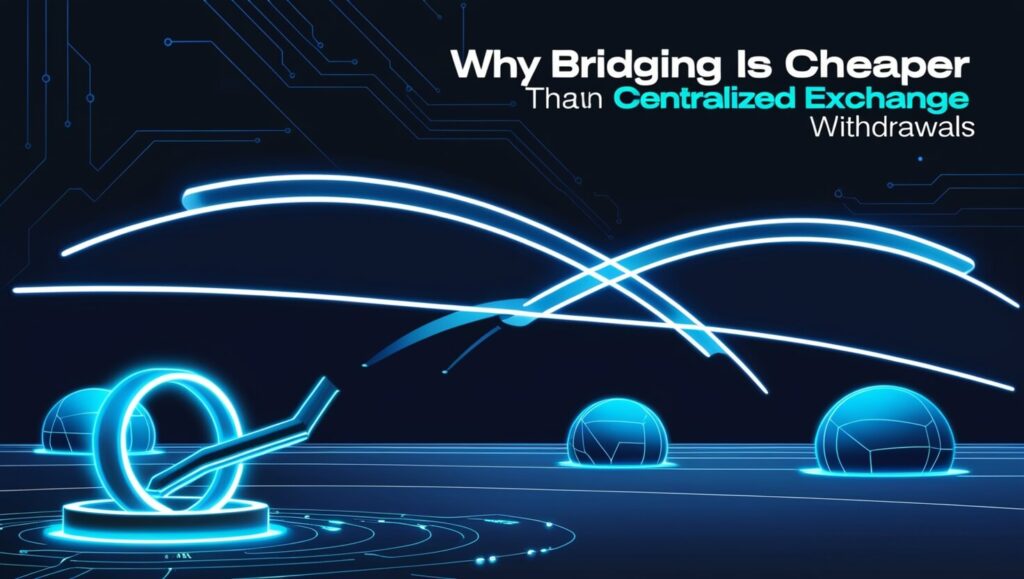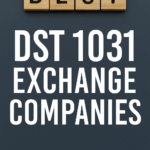I will cover how bridging is cheaper than Centralized Exchange (CEX) withdrawals in this article.
While CEXs have extravagant platform and network fees usually around $1 – $35 per transfer, bridging lowers the costs by avoiding the middlemen and using the low fee Polygon network.
I will explain the mechanics, savings, and costs, and why bridging makes sense economically for crypto users.
What Is Bridging?
Bridging allows the transfer of cryptocurrency or digital assets from one blockchain network to another. It allows for better functionality between various chains; users can transfer tokens, data, and even NFTs.
Usually, the transfer is facilitated by the use of smart contracts, liquidity pools, or wrapped tokens.

For example, moving ETH from Ethereum blockchain to Polygon requires locking the original ETH on Ethereum and minting a matching wrapped ETH on Polygon.
Users are able to interact with various DeFi protocols while having lower fees and faster transactions. Despite the benefits, bridging comes with some risks like slippage, smart contract vulnerabilities, and delay in transactions.
What is Centralized Exchange?
A Centralized Exchange (CEX) is a crypto trading platform operated by a single organization for buying and selling cryptocurrencies such as Bitcoin and Ethereum.
It serves as a third party, keeping users’ assets in its accounts, merging orders, and guaranteeing reliable and quick transactions.

Examples are Binance and Coinbase, popular for their customer friendly interfaces and good liquidity. CEXs also have the downside of poor security, regulation risks, and reliance on the operator.
In contrast to decentralized exchanges, they focus on ease of use and speed while relinquishing some control to the user, making them controversial among the cryptocurrency community.
Why Bridging Is Cheaper Than Centralized Exchange Withdrawals

Cost Efficiency
Moving assets via a bridge can be less expensive because it does not incur the fees related to withdrawal and trading on centralized exchanges.
Lower Fees
Certain bridges, particularly on specific trading pairs, have very competitive fees which makes them cheaper than centralized exchanges.
Faster Transactions
A crypto bridge can also bring faster transactions than centralized exchanges with their slower transaction speeds.
No CEX Withdrawal Fees
CEXs impose fixed or fluctuating withdrawal fees, sometimes greater than the real network fees. Bridging CEXs bypass costs, making it a more economical option.
All things considered, these reasons result in a lower cost for bridging assets.
Cost Comparison: Bridging vs. CEX Withdrawals
Bridging is usually cheaper than CEX (Centralized Exchange) withdrawals because of its fee simplification. CEX withdrawals have a combination of two fees: a platform fee, such as on Binance where you pay $5-$20, plus a network fee for gas, like $5-$15 worth for Ethereum.
This often adds up to spending anywhere between $10-35 for a $100 withdrawal. However, bridge only charge a gas fee which varies by network: $2-$5 on Ethereum and $0.01-$1 on Polygon or Arbitrum.
For instance, $100 worth of ETH would cost $15 to transfer via CEX but can be done for $3 via the Polygon bridge. While frequent moves or larger transfers maximize these savings, bridging costs tend to increase when the networks are congested.
Potential Drawbacks and Risks
Smart Contract Vulnerabilities: Bridges are dependent on smart contracts which can be bugged or hacked. The $600M Poly Network hack of 2021 is an example of an exploit that can put funds at risk if the bridge is not secure.
Complexity: Forget about ease-of-use and user-friendliness: bridging requires use of a crypto wallet (MetaMask), knowledge of the specific network, and more importantly, active participation as opposed to the simplicity that accompanies CEX withdrawals due to its centralized nature.
Network Dependency: Costs and speed are directly dependent on the number of transactions being conducted on the chosen blockchain. Peak times can be accompanied with high gas fees reducing the cost advantage over the CEX.
Limited Support: Unlike CEXs, bridges don’t provide users who have encountered problems like failed transactions customer service, meaning users are forced to find their solutions to problems by themselves.
Irreversibility: In bridging, errors such as sending funds to the wrong network are permanent, while in CEX s your funds could be frozen, enabling CEXs to offer mid-option to errors to aid users.
Understanding Centralized Exchange Withdrawals
Centralized Exchange (CEX) withdrawals refer to the process of transferring cryptocurrency from a CEX platform, like Binance or Coinbase, to an external wallet.
When a user initiates a withdrawal, they select the asset (e.g., Bitcoin), enter a destination address, and confirm the transaction.
The CEX then deducts the requested amount from the user’s account, charges a withdrawal fee (e.g., $5-$20), and pays a 0network fee (e.g., Ethereum gas) to process the transfer on the blockchain.
These fees cover the exchange’s operational costs—security, infrastructure, and staff—while ensuring funds move securely. Withdrawals are typically fast but can be delayed by manual reviews or network congestion.
Additional Benefits of Bridging
Lower Fees and Quicker Transactions
Bridging to side chains or lower tier networks (L2) is quicker and cheaper than using higher tier networks (L1).
More Options with DeFi
Users can access multiple chains, which allows attaching different liquidity pools, yield farms and DeFi protocols maximizing earnings.
Greater Token Utility
Bridging increases the accessibility of tokens by allowing them to be used in other chains which do not natively support them.
Arbitrage Between Chains
Traders can actively use arbitrage across different blockchains to take profits fom discrepancies in price of the same asset on various chains.
Reduced Congestion
Bridging lessens the load on higher tier networks by letting activities happen at lower tier networks, thus increasing efficiency and scalability.
Expansion across Multi-Chains
Users are not limited to a single network and can extend their holdings across multiple blockchains.
Increased Functionality for dApps
Bridging allows the development of dApps on multiple chains extending the accessibility and functionalities.
Conclusion
Bridging emerges as a more affordable option as it removes platform fees and utilizes inexpensive blockchain networks, which reduces costs by 50-90% in comparison to the $10-$35 CEX withdrawal fees.
While saving money, time, and effort, Bridging does offer some trade-offs, such as increased technical difficulty and smart contract vulnerabilities.
For users on a budget who are familiar with wallets and bridges, bridging is undeniably the better option.
However, this decision ultimately relies on personal preference; however, a shifting crypto market that incorporates bridging lets users improve their transactions is showcased.










